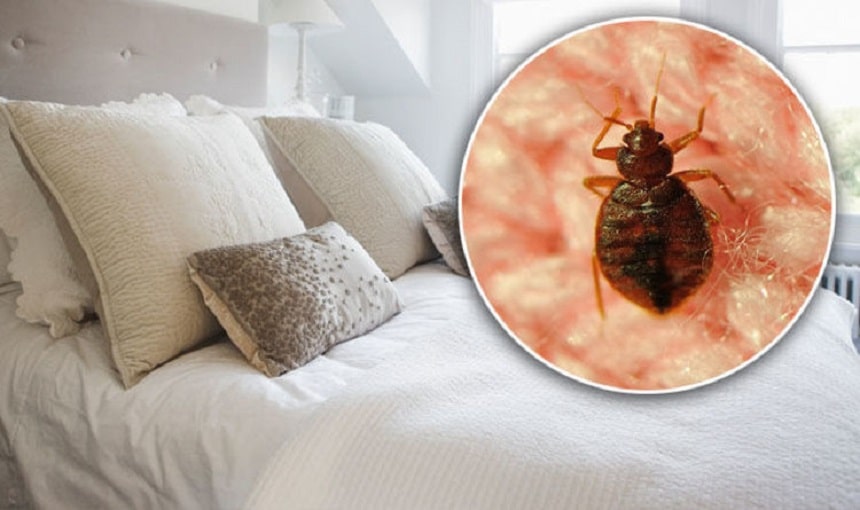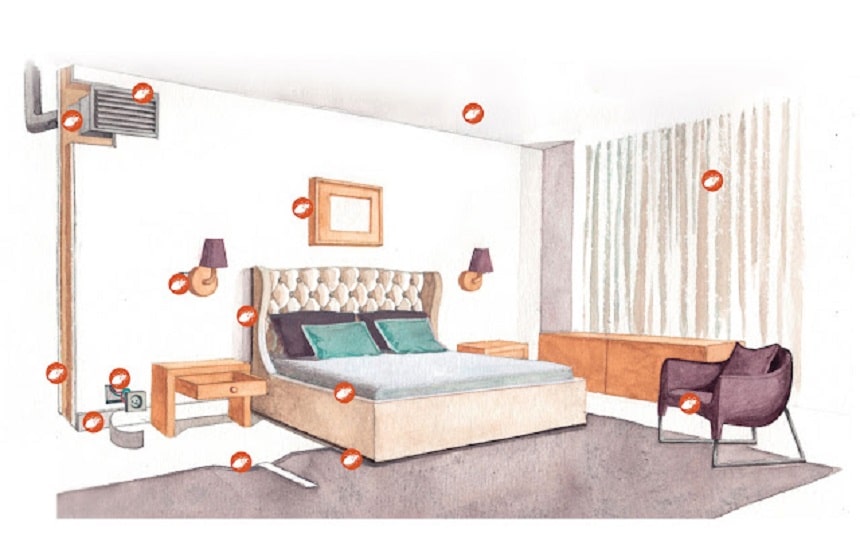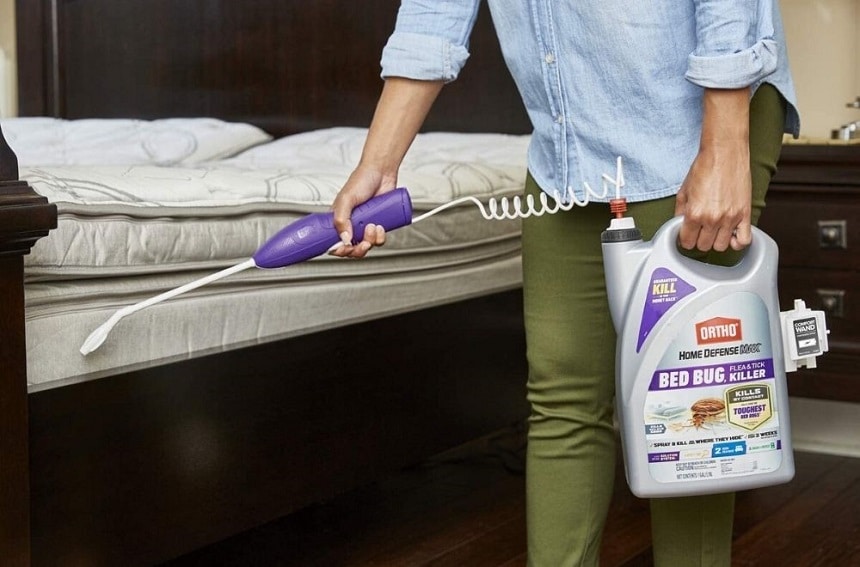

Do you awaken with bites? Do you see blood stains on your blankets, sheet, or mattress? Sometimes do you find shells or tiny specs in your bed? Do you roll over and find a localized and very itchy rash? Saying yes to any or all of these may mean that your home has uninvited guests. Getting rid of these insects isn’t hard, but they can be unsettling. But do bed bugs fly, you ask? It may seem that way, especially when an infestation surprises people, but it’s not the case.
There are many different options for both preventing and eradiating the assorted sizes and degrees of infestations. Bed bugs are common household pests that find their way into the coziest parts of a home – the bed! Crawling into bed at night is supposed to be comfortable and relaxing. Creepy crawlies are the last thing people want under the covers with them.

These parasites are minor brown bugs with six legs. They’re about 5 mm (0.2 inches) long when they reach adulthood and can be as small as 1 mm (0.04 inches) while they’re infants. These are parasitic insects causing worlds of problems Trusted Source Parasites - Bed Bugs | CDC Bed bugs, a problem worldwide, are resurging, causing property loss, expense, and inconvenience. The good news is that bed bugs do not transmit disease. www.cdc.gov such as property loss, economic loss, overall discomfort, and health concerns.
When it comes to what do bed bugs look like, they’re exceedingly small, and this makes them hard to spot and differentiate from other insects. They’re about the size of an apple seed which makes finding and exterminating them a challenging task. Although they’re small, they can be seen with the naked eye.
These insects are remarkably interesting because they’re highly adapted. They don’t have wings and are thus unable to fly. If anyone has ever seen a parasite infestation up close, there are many questions about how they move around. Do bed bugs fly or hop? Do bed bugs fly or jump? What about wings? Do bed bugs fly or have wings? Did they ever have wings?
What do bed bugs fly or crawl or jump towards in terms of food? Well, fresh blood. But do they move that way? The short answer is no.
This is an interesting subject because bed bugs did have wings at one point in their evolution. Since then, they’ve evolved without wings. Evolution made sure they survived the best they could. Their need for speed and secrecy was more useful to live amongst human households.
These parasitic bugs cannot fly. This is one of the major concerns that comes to people’s minds, ‘do bed bugs fly around the room?” This thought is much more terrifying and unsettling than the truth.
Bed bugs can’t fly at all: this is a common myth.
This is a great question that gets asked quite a bit, especially during an inspection. While checking your home for uninvited guests, you may wonder, ‘can bed bugs jump and do bed bugs jump at you?’ The answer may put your mind at ease. These bugs can’t fly, glide, or even jump.
These bugs are determined to do what they do best, munch and mate. They’ll make their own way around your home with or without your help. Like most insects, bed bugs need a way to get around to find their next meal or their next mate. Crawling is this bug-specific strong suit. With 6 legs, they can scurry from place to place very quickly.

One of the added advantages of this organism is its versatility. These are the kind of creepy crawlies that can and will climb walls. They are speedy and resourceful crawlers that will use heating ducts, air vents, laundry chutes, holes in the drywall, walls cracks under the doors, anywhere they can fit; they will crawl on.
As we discussed earlier, bed bugs are adaptable creatures. They’re able to not only hide in various places but can last for upwards of a year without sustenance. These specific infestations are a severe problem throughout North America. Enough of a problem that there is a joint acknowledgment from the U.S. Centers for Disease Control and Prevention (CDC) and the U.S. Environmental Protection Agency (EPA). Bed bugs are challenging to get rid of.
Typically, bed bugs hide in beds or mattresses. They can be found in the box springs, the mattresses, the bed frame, and anywhere in between. They can and do hide up to 8 feet away from the bed or their source of food. As they’re ridiculously small, they can be hard to spot. These insects are known to hide anywhere they can, from books to the joints in a bed frame to behind photo frames.
However, bed bugs go into hiding in many different areas. These infestations aren’t only a problem for sketchy motels and unkempt theatres. They can attach to nearly everything.
Receiving furniture from second-hand, thrift stores, dumpster diving, or scavenging provides a risk for getting these pesky parasites. Regardless of the financial savings initially, it’s better to merely buy furniture at an affordable price at the start. Instead of picking up a used mattress from someone on Kijiji, simply buy a new inexpensive memory foam mattress like the Nectar.
These bugs are built to breed and create a large-scale infestation. Healthy females can lay up to 500 eggs. With approximately half of those eggs growing up to be female, there’s an exponential growth rate in bed bug numbers. The more there are, the harder it is to get rid of them. Even leaving one single female alive can lead to the infestation coming back. Each day there can be 5 eggs per healthy female. Those larvae can grow, and incestuous breed with one another’s siblings.

This is one of the most challenging, most time costly, but cheapest methods available for residents. DIY pest control is an arduous process with many steps Trusted Source Do-it-yourself Bed Bug Control | US EPA Controlling bed bugs is complex. Using an integrated pest management (IPM) approach incorporates both non-chemical and pesticide methods. www.epa.gov that allow for the most control and affordability of all the options. You know your home is the best. Start by figuring out where the infestation is. Do a throughout inspection throughout the home.
It may also help if you use scents that repel bed bugs. Fortunately, such scents exist, and most of us have at least one of these things. Choose what you like more:
This step is a great first step. It has the potential to wipe out an infestation and as a preventative measure. However, as with many parasitic infestations, it may need more than one step or one attempt. Be patient: eliminating creating a bug-free house takes time. Consider buying a mattress pad like Extra Thick Bamboo Mattress Pad, mattress protector, or special sheets to protect yourself and your skin from further irritation as you decrease the infestation.
There are many different do-it-yourself methods of getting rid of an unpleasant incursion. There are bed bug traps that assist in limiting the infestation. Interceptors, as well as monitors, coaster traps, and ortho traps. Bug bombs or foggers, although popular, don’t work at all for insect infestations.
When using over-the-counter products, keep in mind that many different types of insect invasions have become highly resistant to the products that are already out there. These insecticides alone aren’t enough to eradicate an infestation. Cleaning, organizing, and preventative measures are also required to keep a home pest-free. Make sure you’re getting the right type for the job.
Make sure that the pesticide you use is:
There are many other preventative measures available alongside over-the-counter pesticides. These include various kinds of repellent like those for clothing, skin, beddings, doorways, and so much more.
Consulting with a professional will guarantee that you’ll be getting rid of the bed bugs for good. Make sure the pest control professionals you contact not only have experience but also have licensing and certification for bed bug infestations.
Insects like bed bugs can be hard to spot if you don’t know what you’re looking for. The first sign is typically either seeing the insects themselves or their bite marks. Yep, bed bugs bite.
Here are some signs of an infestation:
Spreading pests around a home can happen anywhere. These 6-legged creatures can go anywhere that a person can go. This includes cars, purses, clothing, toys, taxi, public transit, or even planes. Bed bugs will center their infestation around their food source – you. If you move to a different room for a lengthy period, they’ll follow you. If the closest food source moves, they’ll find another one.
Whether it’s night or day, these parasites don’t much care. Bed bugs tend to be more active at night, but they can feed at any point. They much prefer their host to be still for extended periods making nighttime generally a perfect time. They will still feast during the day if a host is sitting or lying still for long enough. Does that mean bed bugs can bite you while you’re taking a nap in the afternoon? Or studying for a final lying-in bed? Unfortunately, yes.
Since they’re more active at night, it leads to a lot of sleep disturbances. These disturbances have a resounding impact on the person’s health, both physical and mental. Trusted Source Sleep is essential to health: An AASM position statement | AASM Sleep is a biological necessity, and insufficient sleep and untreated sleep disorders are detrimental for health, well-being, and public safety. aasm.org
Belonging to the insect family cimicid, they are parasitic insect that feeds exclusively on warm-blooded animals. They feed on living hosts such as human beings for their food. Human blood provides a better snack for these thirsty bugs than pets like cats, dogs, or gerbils.
Now you know the answer to your question ‘do bed bugs fly?’ as well as what to do for a bed bug infestation. These informational guides, tips, and tricks are sure to keep you and your family pest-free.
A home is a place for family, comfort, and relaxation, not dealing with pesky pests. Although they can’t fly or jump, bed bugs can crawl throughout your home. Parasitic household pests such as bed bugs can not only be uncomfortable but unhealthy house guests. Don’t let parasites harm your skin and disrupt your regular night’s sleep. Make sure to act immediately to stop them from breeding and spreading.





